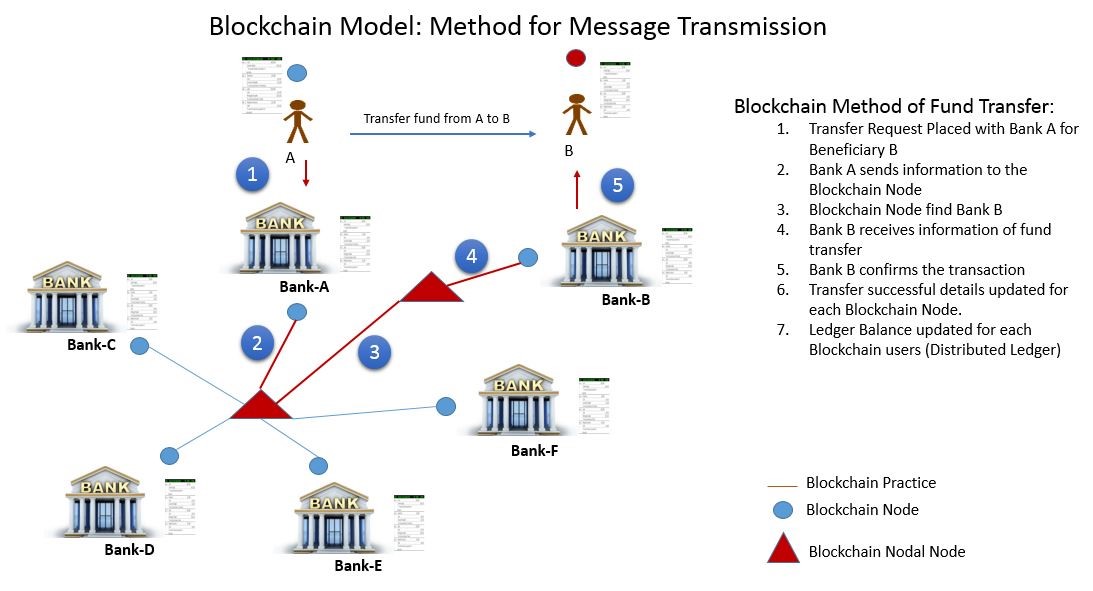Blockchain: Need of future for Financial Industry

- Saurabha Sahu, Senior Consultant at Mindtree
- 29.04.2016 08:00 am Blockchain
In today’s global economy, the information shared across various entities and industries have to be 100% accurate secure and transparent. This requires a robust, secure data transmission through a defect free network.
Financial data is the backbone of any Organization. The financial Institutions are leveraging the secure and robust communication channel for data transmission. Banks are managing financial data on behalf of customer which involves secure data transmission across various related entities in the transaction process. Currently Banks are using SWIFT for this, which is the single method of data transmission. In SWIFT, Banks need to maintain the relationship with other banks for data transmission.
Today Speed is becoming a vital part of life, everyone needs everything to happen at a pace. Time is Money for everyone. Customers are willing to pay higher fees to accomplish the faster transaction processing. Banks are forced to process the transaction with utmost priority. Customer satisfaction is the ultimate goal of the Bank. To accomplish it, Banks are forced to make a workaround solution to provide a best effort value date and faster settlement of funds of the customers.
In order to meet the customer expectation and for efficient financial management, banks are looking forward to solution where:
- Data can be transmitted within a secure network
- Data should not be manipulated at any time during transaction as well as after the transaction
- Transaction Information should reach the correct beneficiary
- Faster sharing of information across all related parties
- Settlement of fund in a real time basis for each party
This has led banks to look forward towards a dynamic environment with a faster transaction accomplishment to meet the customer expectation and satisfaction.
In this article we will discuss around the faster and safer messaging transmission mechanism through Blockchain and subsequent article on settlement and ledger maintenance for any transaction.
What is Blockchain?
Blockchain is a robust mathematical algorithm which has the potential to provide unprecedented transaction security through cryptographic method. Individuals, Small, Medium and Large scale industries will be benefited by using this mechanism. Financial Institutions cannot be discounted from adopting any technological changes any longer.
Blockchain has a distributed database that maintains a continuously growing list of encrypted data without tampering or revision. The distributed model of Blockchain is completely aligned to the digital and mathematical transformation. It is a new model that could create a fundamentally unique way of financial transaction processing.
A Blockchain consists of two kinds of records in the chain of transmission.
- Transactions
- Blocks
Transactions are the actual data to be stored in the Blockchain, and blocks record and confirm when and in what sequence transactions became journaled as a part of the Blockchain database.
How it Works?
The mathematical logic has the capability to find the free Node (Each Participant in the network are connected through Nodes) and pass the transaction around node to node on Best-effort basis to reach the destination.
Financial Institutions need to take care of the fundamentals to start with Blockchain:
- Participant should have Unique Identity
- Each Participant should be part of an integrated network
- A Participant can be included as a Direct or Indirect Participant in the network
Looking at these fundamentals, it appears to be same as our current practice of financial message transmission.
So how it is different than the Traditional Method?
The difference of Blockchain comes, when the transaction Block finds its unique and shortest path of transmission of message from One Node to Other.
Example: Customer-A (Debtor) of Bank-A wants to transfer funds to Customer-B (Creditor) of Bank-B.
Bank-A will initiate the Customer Instruction for payment processing towards Bank-B.
Refer to below diagram (Blockchain Model: Method for Message Transmission)
The mathematical logical of Blockchain will create the Customer instruction as a Transaction and will be attached to a Block. That block will find the nearest available free or not much overloaded Node for Bank A. It will assign a weightage to that path. In the similar fashion Block will find the next Available Node, so that it can reach to Bank B.
Block will be transmitted to the next available Node and to the destination.
The ground rule for transmission of block/ transaction to happen is where the connectivity between the two Nodes have the shortest weightage. The most efficient chains or paths can be computed using automated services. In the similar method, block also maintains the links till it reaches the destination. The transmission of message from Source to Destination will happen in micro or milliseconds. In the similar method the settlement of funds also will happen.
The above process or method is always advantageous over the current traditional method of message transmission as follows:
- Ability to converge a significant number of nodes to a single consensus of the most up-to-date version of a large data set such as a ledger, even when the nodes are run anonymously, have poor connectivity with one another, and have operators who may be dishonest or malicious
- Ability for any node that is well-connected to other nodes to determine, with a reasonable level of certainty
- Prohibit the high cost to attempt to rewrite or alter any transaction history
- High Data integrity
- Diversified accounting
- Less Charges towards the message carrier as infrastructure
- Financial ecosystem will be simplified
- Transparency in audit
- Reduces counterparty charges
Where it can be used?
Financial and Non-Financial Institutions can leverage the use of new messaging method not only for Customer Instructions, but also for a lot of other kind of functions. Below are some of the other functions, where Blockchain has potential to provide a fare and faster method of processing:
- Customer Reporting
- Inquiry Request Processing as Request and Response.
- Trading and Markets
- ATM and POS Transaction processing
- Inter Bank Clearing and Settlement
- Security Related Transaction and many more.
As we talk more on the advantages as well as futuristic view, we should also think on the limitations and risks which always comes as an integrated bundle with a new change.
But Banks should not forget the Limitations and Risks for Using the Blockchain:
Limitation and Risk
Below are some of the Limitations and Risk of Blockchain method:
- Compliance Check
- Compliance check would be full responsibility of the Message Initiating Party.
- Compliance check is not possible with current frame work of transmission of message
- Ongoing development
- Blockchain software is still in pre-matured and incomplete features with an active development
- New tools, features, and services are required to make Blockchain more secure and accessible to the masses
- Transaction Recall
- Blockchain method of processing do not have any facility of transaction recall or cancellation request processing
- Scarcity of Resources
- Resources who are knowledgeable in Blockchain processing as Developer or tester
- Regulatory Limitations
- There are not clear regulations currently for Blockchain transactions
Blockchain will always provide a better and secure method of data and message transmission. This will be a new shift of messaging transmission to the financial world. This revolution will add a new horizon to the financial transactions.
After all, Financial Institutions and Non-financial Institution are required to prepare themselves for the new future of message transmission. In my next article we will try to understand more on how cloud computing technology will help the institutions for their day to day activities.

























